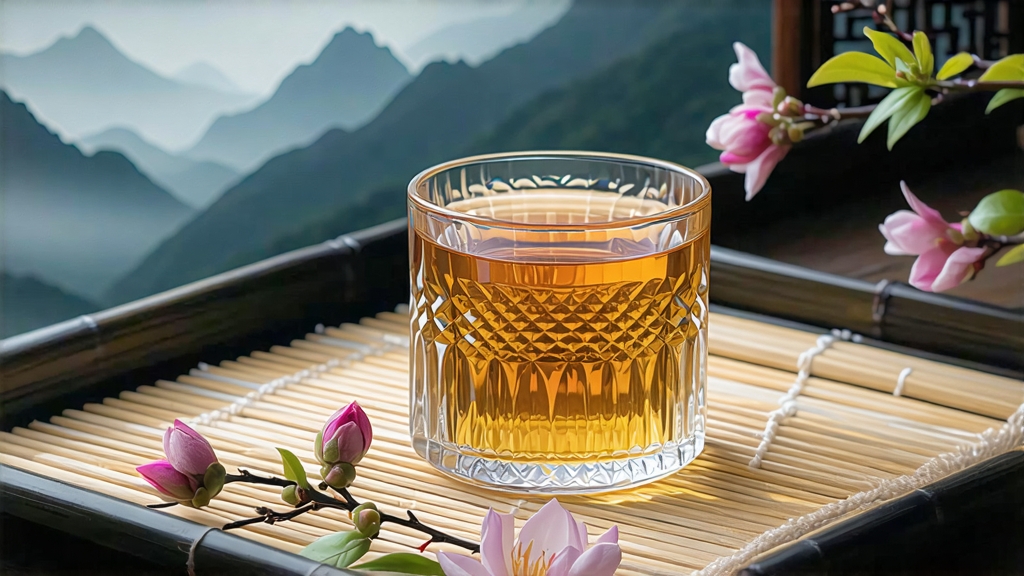
Among the six great families of Chinese tea, white tea is the quietest sibling, the one that ages into wisdom instead of fading into forgetfulness. Within that family, Bai Hao Yin Zhen—literally “White Hair Silver Needle”—is the uncrowned prince, prized for the downy innocence of its unopened buds and the moonlit elegance of its liquor. To understand China’s most expensive and least processed tea is to listen to a story told by mountain mist, sea breezes and the patience of farmers who are willing to gamble three seasons of labor on a single perfect morning.
-
A bud that outran history
White tea’s written record begins around 1796 in coastal Fujian, yet legend pushes the origin much further back to the Song dynasty’s royal tribute lists. Those early cakes were not the loose buds we know today; they were compressed bricks steamed and stamped with dragon-phoenix insignias. When the Ming emperor abolished compressed tribute tea in 1391, loose-leaf fashion drifted southward to the rugged counties of Fuding and Zhenghe, whose terroir—acidic red soils, 1600 mm annual rainfall, and a maritime fog that lingers like a haiku—proved irresistible to the Da Bai Hao cultivar. By the late Qing, local merchants discovered that if they plucked only the unopened bud in early March, then allowed it to wither without any heat, the result was a pale infusion that tasted of fresh lychee and mountain air. European traders christened it “Silver Needle” for the shimmering trichomes that coat each spear-shaped tip, and export prices soon surpassed those of Keemun black tea. -
The taxonomy of a single tip
Purists recognize only two authentic styles: North Road (Fuding) and South Road (Zhenghe). North-road buds are plumper, thanks to the sea-influenced climate; they yield a lighter, jasmine-honey cup. South-road terroir sits slightly higher and inland, producing slimmer needles with more cassis and pine resin. A third, more recent variation appears in Yunnan, where large-leaf Assamica buds are processed in the white-tea manner; while visually dramatic, the cup is often brasher, lacking the lace-like subtlety of Fujian originals. Within Fuding itself, micro-lots are now being tracked by village—Guan Yang, Pan Xi, Tai Mu Shan—each offering minute differences in amino-acid sweetness dictated by forest cover and mineral drift. -
Crafting nothing into something
The entire process can be written on a single rice-paper strip: pluck, wither, sort, finish. Yet each step is a meditation on moisture and time. Picking begins when the morning dew still clings, but only if the temperature hovers between 14-19 °C and humidity stays above 70 %. Two-leaf-and-a-bud standards used for green tea are rejected; only the solitary apical bud is snapped, using the nail rather than the fingertip to avoid bruise oxidization. The day’s harvest is spread on bamboo trays no thicker than one bud layer, then slid into a sun-lit corridor where angled shutters slice the light into ribbons. For the next 48-60 hours the buds lose roughly 70 % of their moisture while enzymes create a cocktail of volatile terpenes—linalool, geraniol, phenylacetaldehyde—responsible for the tea’s signature orchid note. When the ambient temperature drops at night, trays are stacked and covered with gauze to trap metabolic heat, encouraging a slow “internal withering” that softens grassiness. Finally, a 15-minute charcoal bake at 40 °C sets the water activity below 7 % without caramelizing sugars, preserving the silvery down that gives the tea its name. -
How to coax moonlight into a cup
Silver Needle is shy; it rewards restraint and punishes impatience. Start with a tall, thin-walled glass or a porcelain gaiwan so the rising buds can be observed. Use 3 g for 150 ml, a ratio lower than for green tea because the buds are dense with amino acids that can taste cloying if over-concentrated. Water should be spring-quality and cooled to 80 °C; anything hotter volatilizes the down and leaves a rasping dryness. First infusion: 45 seconds, no lid, allowing